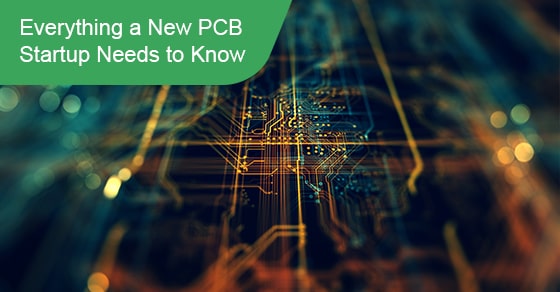Everything a New PCB Startup Needs to Know
There is a delicate art and science involved in printed circuit board (PCB) manufacturing in Canada. If you are an entrepreneur with limited to no experience in PCB design, you may not know where to start.
The same can be said of an engineer who recently graduated from university or an amateur hobbyist who needs a gentle push in the right direction. Here, we will discuss everything a new startup needs to know about PCB manufacturing in Canada.
Learn the Jargon
Begin by learning the vernacular. Some of the terms can be complicated, so take the time to learn the industry's terminology before you proceed. There are free websites and video tutorials available that will teach you the basics of PCB design. You will learn the fundamentals of electrical engineering, such as circuits and electronics, which are a must for an aspiring PCB startup.
Do Not Waste Resources
Starting a new company can be very challenging. You will want to avoid making any costly mistakes that can sink your new enterprise. Ensure that you do not waste any valuable resources while building your PCB company. Many hardware projects can be completed in-house, which will save you quite a bit of time and money.
Before you tackle a new project, you will need to ask yourself many questions. For example, you must determine your budget as well as your schedule. You will also have to assess your team's strengths and weaknesses and determine how many products you will need to build. Examine specific standards or certifications that may be required, and look into outsourcing, as it may be needed for more complicated tasks.
Trial and Error
If you are a startup, you will likely need to go through some growing pains or baptism by fire. Begin by trying to design a circuit from the ground up. Development boards are a safe and affordable way to start. For instance, you can start with a Raspberry Pi or Arduino. You may also want to involve a co-founder (if applicable) or team member who will be heavily involved in the company.
If you or your team member cannot design a circuit from scratch, you may need to outsource to finalize the design process. It is also important to remember that not every project will need its circuit mounted on a printed circuit board.
If you plan on making just one copy, then perhaps you should work with a prototyping board instead. Prototype boards will provide you with more flexibility should you need to modify your design in the future. They also do not involve high assembling or manufacturing costs either. The PCB design process should only begin once you are ready to manufacture a large number of your product.
Determine What You Want to Make
The first step in PCB manufacturing in Canada is determining what you want to build. Your product will need to address a need in the market. It must solve an existing problem and, ideally, do so better than your competitors.
Determine what its core features will be, as well as who the target user is. You will also need to know how big or small it should be to optimize functionality and cost-effectiveness. Google Drive and Basecamp can be used if you need a tool to compile all of your data in a seamless and convenient manner.
Hardware vs. Software
You should understand if it’s best to add lines of code in the software or add hardware components instead. Hardware will rarely fail, assuming it was fabricated correctly. Hardware will also work with an analog signal, is easier to debug, and has the advantage of not being hackable.
However, software has its own set of distinct advantages. For example, software is easy to update. The BOM (bill of materials) tends to be cheaper and shorter, and software requires fewer components. Additionally, troubleshooting is simpler with software.
Design the Schematic
We will now move onto the execution step of the PCB design process. Given that you are a startup, you will likely need to find resources to help bring your vision to fruition.
Blog articles and DIY videos can help you in this process. However, we highly recommend sending your project to an advanced PCB engineer or designer, as there is no cookie-cutter solution for every project.
PCB Design in a Nutshell
First, you must describe your item. You will then need to define your software before you begin working on the design of the circuit schematic. Next, start working on the design of the PCB layout itself.
After you have designed the layout for your PCB, carefully review its design. Once you are confident in the results, you should send it for prototyping. Then, inspect the prototype meticulously. Plug and test ad nauseum until you are 100% confident in the work. Customer feedback is crucial, as your core audience will not be afraid to tell you exactly what they think and need in order to be satisfied.
Next, focus on iteration before you delve into the final step. This involves mass production adaptation and cost optimization to maximize your return on investment (ROI).
Circuits Central
If you would like to learn more about PCB manufacturing in Canada, please visit our website. Circuits Central specializes in the pre-manufacturing, manufacturing, and post-manufacturing of printed circuit boards and other components.
With over 25 years of industry experience, we have worked with many pioneering leaders in the aerospace, defence, medical, communications, commercial, industrial, power, and renewable energy industries. We can be reached at 1-888-821-7746 for a free, no-obligation quote and consultation with one of our knowledgeable PCB design experts.

